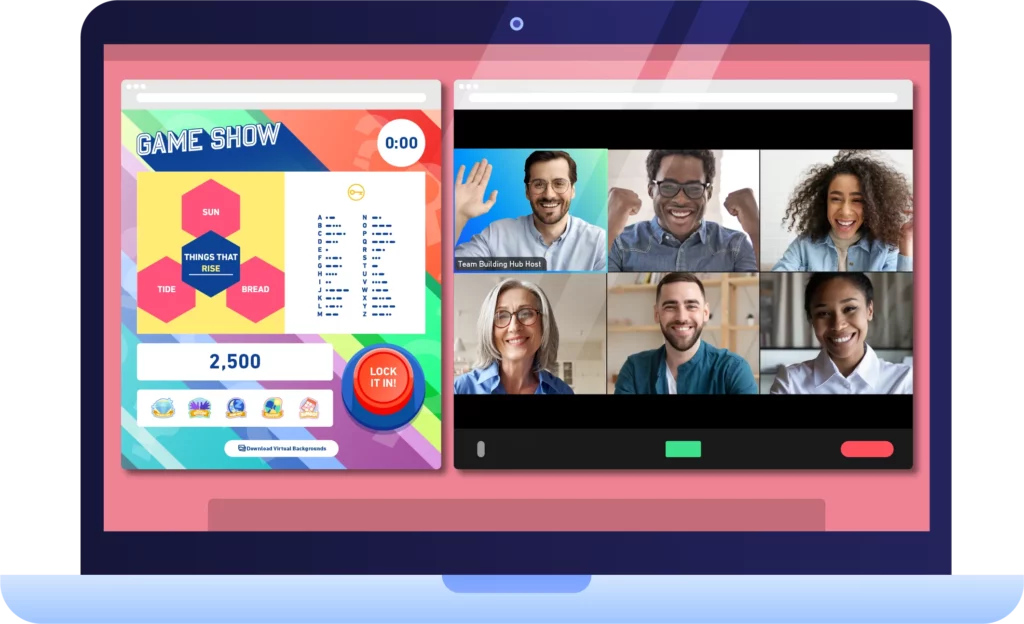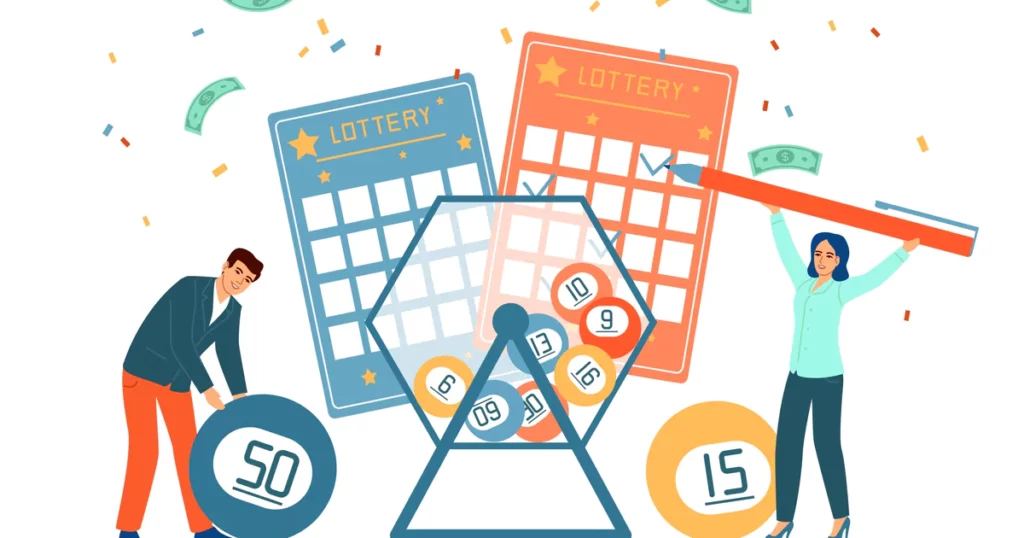Employee incentives seem like optional things that you can sprinkle into your workplace, but they’re actually more beneficial than you think! Incentives can better your team, your workplace, and your company overall. With the help of this guide, you’ll see why incentives should be part of your work culture, what incentives are the best for your team, and how you can start positively impacting your company by using them.
Table of Contents
Why Are Employee Incentives Important?

What are employee incentives?
An incentive is “something that incites or has a tendency to incite to determination or action,” according to Merriam Webster. When you add them to your workplace, they can help motivate your employees in their everyday work or in something else you are encouraging them to do. Those results can include everything from showing up to work on time to finding career development options that can improve their skills.
There are four main types of employee incentives: compensation, recognition, rewards, and appreciation. Throughout a calendar year, you can mix up how you encourage your employees to follow through on things you’d like them to do using these different kinds of incentives. You’ll want to be creative with how you incentivize your employees. Each one of them has their own preferences and will respond differently to what’s presented to them. As you read about each type of incentive, think about the team you lead and who would respond to each kind positively.
1. Compensation Incentives
Compensation is a monetary way that you show your employees how much you value their talents and input. On a broad scale, it’s their monthly or bimonthly paycheck. As an incentive, compensation includes raises or bonuses that you might give on an annual or biannual basis, or even the option to hold stock in your company. Using these kinds of incentives shows that you put your money where your mouth is—you value your employee, so you’re going to invest in him or her with a tangible investment.
2. Recognition Incentives
Recognition incentives can be small, daily things that add up and remind your employees that their work is making a difference. Some of these incentives include saying thank you for a job well done, giving out handwritten notes of appreciation, an employee of the month award, or even bragging about your team to others in a large meeting. By simply recognizing the good work that they’re putting in, you can help boost their morale and increase employee engagement. Even when your team is in the middle of a difficult project or your industry is in a slower season, there’s always something you can recognize.
3. Rewards Incentives
When you think of employee incentive examples, you might first think of rewards incentives. These are tangible gifts that you can give out to your employees such as gift certificates, service awards, or prizes. Rewards incentives are things that your employees can look forward to, especially if you present them with rewards fairly consistently. If you give out rewards on a consistent basis, employees will know what they can expect and you can build up their motivation to receive those rewards by working hard. These don’t stop at small items either! You can give out a pair of noise-canceling headphones, tickets to sporting events, festival passes, and more.
4. Appreciation Incentives
An appreciation incentive is another great way to show you value your employees and encourage them to continue doing great work. You can make appreciation incentives available to your team as a whole to encourage teamwork and collaboration. These can look like a paid lunch after your team has completed a big project, a group outing to celebrate a teammate’s birthday, or a family fun day for the whole office. There are even options for virtual and remote teams. If you have the pleasure of working on your team’s budget, make sure you leave plenty of margin for appreciation incentives. A little bit of foresight (in both budget and time) goes a long way with this incentive.
Although you’re already paying your employees for the work that they do, employee incentives are a step above the bare minimum compensation you give. They’re intentional choices that you as a manager make to show your staff that the things they do can have positive consequences for them as well as the company!

Why are employee incentives important?
Employee incentives are important because they can help boost your employees’ job performance, motivate them to do good work, and can encourage them to stay with your company. Almost anyone who has had a job knows what it feels like to be overlooked or go unnoticed for a considerable amount of effort they’ve put into their work. Employee incentives can help break that feeling and give your team something to look forward to, and ultimately they are a great way to boost employee engagement!
Better employee engagement leads to a better work culture and better outcomes for your company. When you take the time to focus on your employees’ needs, they end up more engaged with their work and will naturally be bought into your objectives and goals. You’ll experience higher employee retention, a more positive workplace culture, less stress for your team, and you’ll see more productivity around the office and profit for your business. Employee engagement really is beneficial for both the employee and the employer!
Along with better engagement, you’ll find that incentives can promote teamwork and help you build trust with your employees. As you lay out the criteria for certain incentives, you can ensure that your team is producing quality work. Make sure that you’re clear on those guidelines to prevent any confusion, and you can reiterate why an employee received an incentive and speak of their contribution to your company.
Impact of Incentives on Employee Performance
Employee performance isn’t simply about getting a job done. It’s about getting a job done well. You don’t simply want your employees ticking off boxes on a checklist of things to get done throughout the workday—you want to see them giving their all and growing in their role. When your team does increasingly well, your business benefits from their efforts. Their performance can move your company forward, but how can you boost it?
This is where incentives can come in and make a difference in performance.
Employee incentives are not the only way to increase performance, but they can certainly make a big impact. The Incentive Research Foundation states that, with the help of a good and well-thought-out incentive program, employee performance can increase by 44%! Notice the “good and well-thought-out” part though. There’s work that managers have to put in if they want to see employees’ performance increase. But, as we can see from the research, that extra work will be worth it in the long run.
Incentives have the power to reinforce certain behaviors and higher levels of performance from your employees. Once they see that there’s something to gain by doing great work, they’re likely to pursue that gain by performing well over and over again. As that performance continues to be validated, they’re more likely to be self-motivated to grow in their job descriptions.
With the use of incentives, you’ll see more productivity and better outcomes, but what’s more, is that your employees will have a better idea of what is needed from them on a daily basis. With clarity on expectations, they can more easily meet your performance goals and be validated in their work through incentives.
Employee Incentives and Motivation
Inc. defines motivation as “the level of energy, commitment, and creativity that a company’s workers bring to their jobs.” No matter what industry you’re in, motivation is something that every workplace needs. It’s the drive employees (and managers!) need to continue showing up to work, day after day, even when things get tough or you’d rather play hooky. Employee incentives can be items or sentiments of motivation that keep your team going and can even encourage their creativity.
When you think of employee incentives and motivation, understand that the incentives you provide can be of value to employees. Those valuables will give your employees the drive to succeed and put more effort into their everyday work. Incentives can positively affect your employees in their work life, personal life, or both.
Studies show that when given a reason to do well, most people will. An incentive gives a reason, and especially if it’s a valuable reason, your staff will be motivated to receive it. For example, Society Insurance found that 85% of workers were more motivated to do their best work when offered an incentive! This goes hand-in-hand with our thoughts about performance. Employee incentives provide a link between motivation and performance—they are the motivation that drives better performance!
If you’re not sure what kind of incentives would motivate your employees, simply ask. You can find out a lot through short surveys or even by having quick, informal conversations with your team. Learn what motivates and excites them, and offer those things as incentives.
Employee Incentives and Retention
As the job market shifts, the idea of retention becomes more and more important for your company. Retention is important because there is a cost in hiring new employees, training them, giving them benefits, making space for them in your workplace, adding them to your work management systems, providing for development, and so on. As you know, each employee you hire adds something unique to your company and your workplace. The thought of losing that “something,” whether it’s a benefit to your particular team or an employee impacts your office in a positive way, should make you want to keep your team together as much as possible.
Of course, some turnover is inevitable (people move, retire, seek career changes, etc.), but if you can boost employee retention rates at your company, your clients can see that you’re trustworthy, and you can even hire more people to fit in the right roles as your company grows. There’s obvious value in retention, and we hope you can begin to recognize it!
Achievers found that recognition and rewards increased employee retention by 41%! If you want to increase or maintain your retention rates, consider what kind of employee incentives you can offer to keep staff on board.
One easy incentive for employee retention is adding more paid-time-off (PTO) days to someone’s bucket the longer that they’re with your company. Even adding two or three extra PTO days can make a big difference. This is a kind of reward incentive that directly correlates to how long someone has been working with you. You can also provide service awards for every five years that someone has been an employee as a recognition of their loyalty to the company. These service awards can be a nice trophy or plaque that someone can take home with them, and you can even pair one of these awards with a coveted gift certificate or prize.
An important question to ask is, What can you do to show long-standing employees that their years of service are valued? Is that incentive something that will keep a new hire coming back? If the answer is yes, you’re well on your way to bettering your retention rates and creating consistency within your office.

Ideas for Employee Incentives
Now that we’ve got the groundwork for just how employee incentives can boost your workplace and your business, let’s look at some ideas for employee incentives. Remember, incentives should applaud a job well done. Throwing out rewards to employees when they haven’t met ascertained criteria won’t reinforce the kinds of behavior and productivity you’re looking for in a successful workplace. As you look through these ideas, keep the four types of incentives in mind (compensation, recognition, rewards, and appreciation), and remember that your staff might respond more positively to some of those incentives over others.
Employee Incentives Programs
An employee incentive program offers rewards to employees as they complete certain predetermined goals in a particular time period at work. These programs should be well-thought-out, relevant, and desirable for employees. That means that you as a manager must take the time to work on what this program will look like.
Good employee incentive programs have clearly defined goals for employees. There’s no question about the criteria, and you have a specific key objective for offering the incentives. You’ll also want to make sure that your incentives fit within your budget, especially if you expect multiple employees to meet the criteria. Well in advance of the beginning of your incentives program, figure out how much you can afford to spend so money is not an issue as your teammates complete the program. As your employee incentives program goes on, continue to be transparent about guidelines and make an effort to track your employees’ performance as it relates to the program.
A program, as opposed to a singular employee incentive, can be presented as a long-term challenge. You can choose monetary or nonmonetary incentives, but choose things that your team will want to receive (again, if you don’t know what they want, simply ask!). Figure out ways to build excitement for your program. If you’ve got a fairly competitive team, lean into that. If you have a busy team with a lot on their plate, make some kind of countdown clock where they can easily see it and have something to look forward to.
As you make time to create a great incentives program, you’ll see a positive impact on your employees’ performance, motivation, and retention rates.
Employee Incentives Games
Games are a great way to incentivize your employees, add some fun to their workday, and build their camaraderie with one another. These games don’t have to be highly competitive, and you can choose to either have each person working alone or with a team. The winners of these games should receive some kind of incentive that will make their coworkers a little jealous! Make sure you get feedback after each game to decide whether or not you would like to run it again or if there are tweaks that need to be made to each challenge.
1. Wellness challenge
A wellness challenge is a great way to meet your employees’ personal needs and goals while giving them incentives at work! You can create a fitness challenge, such as a walking goal for each day, or inspire them to try a new kind of exercise class, such as barre or pilates. Give some flexibility in this challenge, as you might have some employees that have less mobility than others.
2. Customer satisfaction competition
For sales teams or teams that work directly with your clients, you can direct employees to send out a quick, two-question survey to customers after their interactions. You can make these surveys anonymous and write questions that are both qualitative and quantitative. Remember, your incentives program should be easily trackable!

3. Team building activities
Team building activities are the perfect way to boost employee engagement and offer incentives to winners or participants. Your team will be able to work on something together, boosting teamwork, and they’ll be working toward a particular goal, which is winning whichever incentive was promised to them. Check out our page on team building activities to learn all about them and figure out what’s best for your incentives program.
4. Departmental scavenger hunt
Instead of running around town or a park on a scavenger hunt, send teams on scavenger hunts within your office or your company. You can create a bingo sheet that they have to complete within a day or week (depending on how many spaces you have and how difficult you make the tasks). With this challenge, you can create more company unity by allowing different departments to show others what they do or explain certain processes to them. You can also do a virtual scavenger hunt to make an accessible activity for in-person and remote employees.
Employee Incentives Ideas
To help you start brainstorming what kind of incentives will work for your work team, we’ve got a list of some of the best employee incentives that you can offer. Each one of these falls under the four kinds of incentives, and as you read through them, consider what would be novel for your team and would inspire them in their work!
1. Employer-sponsored happy hour
Encourage your team by promising a free happy hour! Offer the happy hour at a reasonable time—even consider ending the workday an hour early so that your employees can attend. These can be held in your office space, at a restaurant or a bar, or even virtually.
2. Raises
A salary raise is a classic employee incentive. The better work they do, the more money they get paid. Compensation conversations can happen on a regular basis (such as annually or biannually), and make sure that you are clear about why you are giving your employee a raise.
3. Prizes
Don’t wait until Christmas to give out good gifts! Prizes or gifts can be given as a reward for a job well done, on a work anniversary, or even as a birthday gift to celebrate your employee. Stay away from just giving out trinkets. Think through what your team would want and what would be valuable to them.

4. Bonuses
A bonus is different from a raise in that it’s a one-time monetary gift. These can be holiday bonuses or bonuses to celebrate someone’s years of service. You can hand out bonuses in a discreet and celebratory way in front of others, building excitement for other employees for when they might have a chance to receive a bonus as well.
5. Festival passes
Festival passes are fun gifts to give because you can send your employees somewhere they might not have ever thought about going to! Look up what kind of festivals or events are happening near you, such as a Renaissance Fair, and purchase tickets in advance so you can guarantee entry.
6. Thank you notes
Thank you notes are bits of appreciation that can go a long way. Handwritten notes are more special than something typed out, and make sure you write something unique for each one that you hand out. These can be given out at any time during the year, and they can serve as a pick-me-up for when one of your team members needs a reminder of the great work they can do.
7. Extra days of PTO
PTO is like treasure in the workplace! Employees tend to guard it and stock up on their PTO for a “just in case,” so extra days can mean a lot for those who are hoping to plan a trip or need a mental health day. These are great rewards for those who have been at your company for a longer period of time.
8. Tickets to a concert or sporting event
Just like festival passes, concert or sports tickets are a way to give your employees an opportunity to enjoy their life outside of work through a work-given incentive! Unlike festival passes, it’s better to give your employee the option to choose which event they would like to attend. There could be schedule conflicts, and chances are, they’re already looking at a calendar of upcoming events in your city.
9. Gift cards
These are some of the easiest compensation incentives you can give to your team! Most gift cards don’t expire, and they’re a nice surprise in your wallet if you’ve forgotten that you’ve received one. You can give out gift cards for stores, coffee shops, airlines . . . the list goes on!
10. Employee of the month awards
While these kinds of awards might seem a little cliché, they can still mean a lot! You can show your appreciation and recognition of an employee while celebrating them in front of the rest of your staff.
11. Branded merchandise
Work with a graphic designer to come up with nice shirts, mugs, lunch boxes, and other items that you can brand with your company logo or motto. You can give out this kind of merchandise as prizes or gifts to your employees, and they’ll also promote your brand wherever they go!
12. Free lunch
You can either provide lunch on-site, invite your staff out to lunch at a restaurant, or provide Uber Eats or DoorDash Delivery gift cards for your off-site employees. Team lunches are great ways to boost teamwork and relationships within your department, plus they’ll be grateful for the time saved making their lunch.
13. Service awards
To celebrate how long different employees have been working with your company, you can provide service awards with a trophy and a prize or a bonus. Celebrate work milestones such as five, ten, or fifteen years anniversaries. Along with the given award, you can share something unique about your employee that shows them you recognize how they add to the workplace in more than just output.
14. Fitness membership
A membership to a gym or specialized gym is a great way to boost your employees’ health and show them you care for them. You can offer a free month at a gym for someone who wins a wellness challenge or for a team that is working on a fitness-related project.
15. Family fun day
Take a half-day once a quarter or so to let your team out and about! You can book a pavilion at a park or rent a few bowling lanes, but whatever you choose to do, make sure you give the option of including your team’s family members in the family fun day. This is a great way to encourage relational trust with your team and to get to know each other better!

Conclusion
Employee incentives are more than just pushes to get your team to work better—they’re ways that you can increase your employee engagement and build excitement in the workplace! As you consider how you can encourage your staff and create a healthy work environment, build in employee incentives into your everyday work culture and you’ll see a positive impact!

